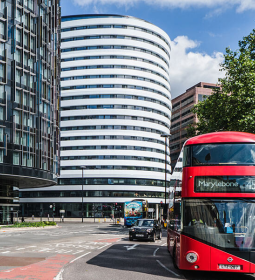Islam is a religion included in the list of the most widespread in the world. Of all three, she is the youngest, but is professed by more than 1.5 billion people. There are followers of the Islamic religion all over the world, and for religious rites they build mosques. Some of them have a special influence among Muslims and have a majestic and beautiful appearance, which tourists come to see.
Cathedral Mosque in Delhi
The construction of this mosque was financed by Shah Jahan , the legendary ruler of indian lands, under whom the Taj Mahal was built. The mosque houses Muslim relics, the most valuable of which is the Koran with pages of deer skin painted by hand. This copy of the book is one of the most ancient, and, as the legend says, was written under the dictation of the Prophet Muhammad himself. In addition, the sacred place has an unusual appearance, which falls into the memory of all who saw it with their own eyes.
Qatar Mosque in Doha
The building in which the mosque is located has a futuristic appearance, and its minarets resemble two intertwined ribbons directed upwards to the height of a thirty-story residential building. The ceiling of the prayer hall is dotted with holes through which sunlight breaks through. In clear weather, a visitor to the mosque can look up and see a semblance of a starry sky, creating an allegory for the unity of modernity, Divine power, antiquity and the cosmos as parts of one world.
Brunei Sultan Omar Ali Saifuddin Mosque
On the banks of the Brunei River in 1958, a mosque building was built, which is a vivid example of the Muslim architecture of sacred structures. This style combines European features and Oriental traditions. The main minaret of the mosque is made according to the canons of the Italian Renaissance - for Muslim religious buildings this style is rare.
Behind the mosque is a ship connected to the building by a marble bridge. The elegant vessel sails on the water only during official ceremonies and state events and holidays, and the rest of the time performs the role of a sculpture.

Nasir al-Mulk Mosque in Shiraz
The building was built on the territory of Iran, in 1888. Outside and inside, the mosque looks like a casket, which is inlaid with gemstones. Sunlight passes through the multi-colored stained glass windows in the windows and is reflected in the bright patterns on the floor, ceilings and walls. Travelers say that this play of light is very similar to what we see in kaleidoscopes. On the floor of the mosque there are tiles of pink color, and on the walls and ceilings there is a mosaic of multi-colored glasses.
Wazir Khan Mosque, Lahore, Pakistan
The construction of the mosque began in 1627 and was completed after 7 years. It received its name in honor of the man who gave the order to build a mosque in the region. The building is made in the classical style of the Mongols, the facade of the main part of the mosque is dotted with frescoes, which were created by the best masters of that era. The interior of the mosque has been preserved in its original form and fully conveys the atmosphere of the XVII century, picturesque desolation and the spirit of the time.
Cordoba Cathedral Mosque in Spain
This mosque is the clearest example of the Moorish style of architecture. Tourists from all over the world come to Spain to look at this building, known for its huge arched vaults, a thousand columns of granite, jasper and marble.
The mosque has a second name - Mezquita. The history of the creation of the cathedral and its existence is very interesting. The beginning of construction dates back to 600 AD, and initially it was supposed to become the Visigothic church named after St. Vincent. After some time, the land on which the church stands was bought by Emir Abd ar-Rahman I for a lot of money. Having acquired the land with the basilica from the Christians, the emir demolished the church, and in its place erected a mosque. During the Reconquista era, Christians conquered Córdoba from the Muslims and returned the church to its original place. Already in the XVI century, a cathedral was erected in the center of the Mezquita.
Zayed Mosque in Abu Dhabi
The United Arab Emirates has the fame of a country that loves to set world records in the field of construction. A striking example is the Sheikh Zayed Mosque, located in Abu Dhabi. The main prayer hall of the mosque is decorated with the world's largest carpet, made according to the drawings of Ali Haliki, and each chandelier of the building is decorated with Swarovski crystals and gold leaf. In daylight, the mosque shines with white and gold colors, and at night it is illuminated by artificial light, which changes depending on the current phase of the moon.

Isfahan Imam Mosque, Iran
The mosque, built in the XVII century, used to be called Shakhskaya, but after the revolution of 1979, the name was changed to Imamskaya. The interior decoration and appearance of the building was handled by Reza Abbasi, an artist who served under Shah Abbas I. The facing of the walls is made of multi-colored glazed tiles, which are painted according to the haft rank technique, or the "heavenly rainbow".
The main feature of the mosque is its acoustics: the domes are made in a complex architectural form, so even the quietest whisper will be heard from the far corners of the building.
Great Mosque of Hassan II, Casablanca, Morocco
The year of creation of the mosque is 1993. At the moment, it has the world's tallest minaret with a height of 210 meters - this is higher than the pyramid of Cheops in Giza! French architect Michel Pinceau installed a laser beam on top of the minaret, which is directed to Mecca. The mosque itself is located on a ledge in the Atlantic Ocean, so the visitor can see the seabed opening in the glass floor.
Zahir Malaysian Mosque, Kedah
The mosque was erected in 1912: it houses the soldiers of Kedah, who died in battle with the Siamese invaders in 1821. The main feature of the building is 5 domes of black color, symbolizing the basic principles of the Muslim religion. Every year, a festival of readers of the holy book of the Quran is held here, which attracts Muslims from all over the world.
Kul-Sharif Mosque, Kazan, Tatarstan
The opening of the mosque took place in 2005, and it is located on the territory of the Kazan Kremlin. The prototype of the structure is the main mosque of the Kazan Khanate, which was destroyed during the capture of Kazan by the Russian Tsar Ivan IV the Terrible. The roof of the mosque is decorated with eight lancet arches intersecting with each other, as well as a dome that has the shape of a traditional Kazan cap.
Masjid al-Nabawi Mosque in Medina
It was this mosque that became the one whose layout became the canon for the construction of other Muslim temples. Muslims believe that its construction was personally engaged in the Prophet Muhammad. In the central part of the mosque, under the dome of green color, is its tomb. Between the tomb and the tribune of Muhammad there is the Garden of Eden - a place that is part of paradise, according to legends.









